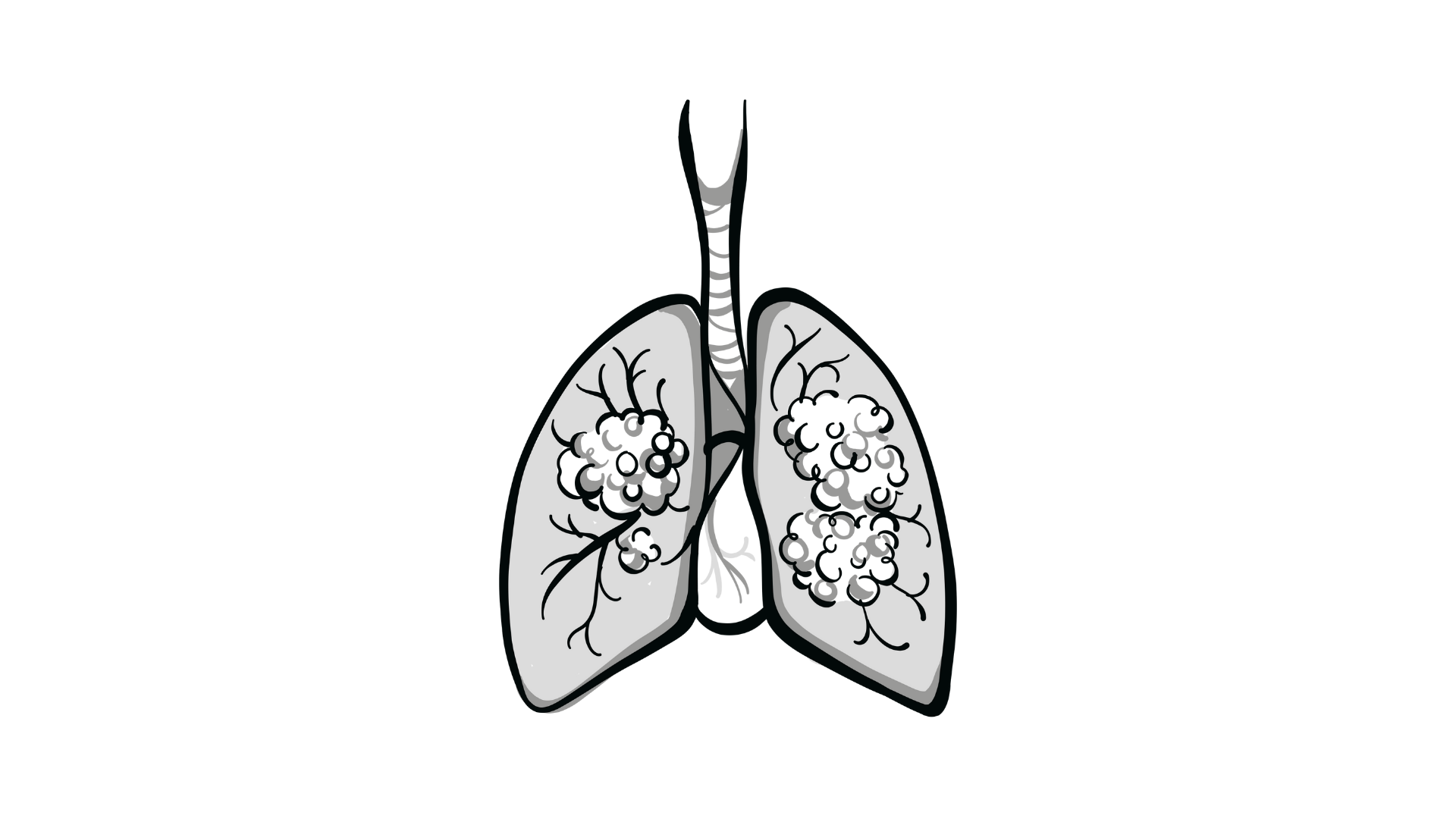Leal Examines Latest Data for Lurbinectedin and Tarlatamab in ES-SCLC
During an in-person Community Case Forum event, Ticiana Leal, MD, discussed the trials of lurbinectedin and tarlatalamb as therapy for previously treated small cell lung cancer.

Ticiana Leal, MD
Director, Thoracic Medical Oncology Program
Associate Professor, Department of Oncology and Medical Oncology
Emory University School of Medicine
Atlanta, GA

Peers & Perspectives in Oncology: Could you explain the recent indirect analysis of lurbinectedin (Zepzelca) vs topotecan in pretreated patients with ES-SCLC who have a chemotherapy-free interval (CTFI) of at least 30 days?
Ticiana Leal, MD: [This was] a pooled analysis of patients with a chemotherapy-free interval of 30 days or greater and without CNS metastases. The ATLANTIS trial [NCT02566993] was the phase 3 trial randomly assigning patients to lurbinectedin plus irinotecan vs [physician’s choice, including a] topotecan subgroup that has 98 patients. This is an indirect comparison of efficacy outcomes from [83 patients receiving lurbinectedin monotherapy in] the basket phase 2 trial [NCT02454972] and [the topotecan subgroup of] the ATLANTIS trial.1
We’re seeing an overall response rate [ORR] of 41% in those patients [receiving lurbinectedin] in the basket trial vs 25% [for topotecan] in the investigator assessment of the ATLANTIS trial, and 33% in the independent review committee [IRC] assessment in the basket trial compared with 25% in the ATLANTIS trial, respectively. The median duration of response was [5.3 months vs 3.9 months, respectively, by investigator assessment]. We’re seeing a median progression-free survival [PFS] of 4 months in the basket phase 2 trial and the investigator assessment was higher than the IRC [3.7 months], which is not unexpected. Then there were similar outcomes in the [patients receiving topotecan in the] ATLANTIS trial [4.2 months median PFS by investigator assessment and 4.1 by IRC]. We saw median overall survival [OS] of 10.2 months in those patients in the investigator assessment in the basket trial of lurbinectedin and 7.6 months [with topotecan] in the ATLANTIS trial.
In terms of adverse events [AEs] of special interest, the overall rate of grade 3 or higher treatment-emergent AEs [with lurbinectedin] in the basket phase 2 trial was 55%, [and for topotecan] in the ATLANTIS trial it was 90.8%. In terms of [AEs leading to] dose reductions, it was 24% and 49%, respectively, and [for AEs leading to discontinuation], 3.6% and 18.4%, respectively. [The percentage of] AEs leading to death was much lower in the single-agent [lurbinectedin group: 1.2% compared with 8.2% with topotecan].
The ATLANTIS trial was a negative trial. It did not show the benefit of adding doxorubicin to lurbinectedin and did not show PFS or OS benefit.2 The main AEs that we see with lurbinectedin are myelosuppression, leukopenia, neutropenia, and thrombocytopenia, but the rates of neutropenic fever are quite low, 2% in the monotherapy experience.1,3 Then there is elevated creatinine, and elevated aspartate transaminase and alanine transaminase, and then in the monotherapy experience, fatigue of grade 3 was seen in about 7% of patients.
What real-world data have been reported on lurbinectedin in the second line and beyond?
[Data on] lurbinectedin in the monotherapy experience in second line and beyond were published in a retrospective chart review of patients receiving lurbinectedin early on after the approval of lurbinectedin at a single site, showing that lurbinectedin was being used for ES-SCLC in 64 of [90] patients.4 Fifty patients received it in second line, and 14 patients received it in the third line.
The…patients who received it in second or third line…included those with de novo as well as transformed SCLC. Real-world experience is important, and it can give you different data, but it’s also a very heterogeneous population because they also included patients who had transformed disease. Over half of the patients were platinum resistant. It also included patients with ECOG performance status of 2 as well as 3; these patients were not included in the trial. It included patients with presence of CNS metastases, which are quite high in this real-world experience, in 54% of the patients in the second line and 79% in the third line. When you look at the lurbinectedin monotherapy experience, they excluded patients with CNS metastases. The reality is that in patients in the second and third line, this is a frequent clinical challenge.
The median PFS for the cohort was 2.1 months with a median OS of 5.1 months. Although not statistically significant, we’re seeing longer PFS and OS in patients with CTFI of greater than 90 days compared with less than 90 days [Table4]. In addition, patients with CNS metastases at the time of lurbinectedin initiation had inferior PFS compared with patients without CNS metastatic disease. This was not statistically significant in terms of OS, but it is important to note that in the third-line setting as well, you’re seeing no difference in median OS for patients with CTFI less than 90 days or greater than 90 days when lurbinectedin was used in the third line and beyond for those patients. There were no deaths while on lurbinectedin at the dose of 3.2 mg/m2.

The conclusion from this small number of patients with early experience in the real-world setting is that there was a modest benefit with lurbinectedin. The chemotherapy-sensitive population seems to derive the greater benefit…. The patients with CTFI greater than 90 days seem to have greater magnitude of benefit from lurbinectedin than the platinum-refractory population. Although myelosuppression is an important AE, I think platinum rechallenge is [challenging], too. You have to individualize the patient experience and have that discussion with the patient. I find lurbinectedin in the real world in the platinum-sensitive population easier to tolerate with less myelosuppression. They have not been compared head-to-head in that way, but that has been my experience. The third-line setting is a tougher population; at that point, you have to individualize [treatment].
What other newer option would be appropriate for a patient like this?
We have another agent here that has been recently approved, tarlatamab-dlle [Imdelltra]. This is an agent that early in the phase 1 experience showed promising safety and efficacy signals, although with some challenges in terms of new AEs for a solid tumor medical oncologist.5 Tarlatamab is a bispecific T-cell engager targeting DLL3 on the cancer cell and targeting CD3 on the T cell. SCLC is a tumor that is immunologically cold, and so what it’s trying to do is bring that T cell to the tumor microenvironment by binding them and hopefully taking away the inactive tumor microenvironment from that equation.
In the early-phase clinical trial with tarlatamab, it was overall well tolerated, with CRS [cytokine release syndrome] being the most common AE with a signal of efficacy with high response rates and durable responses. The phase 2 DeLLphi-301 clinical trial [NCT05060016] investigated tarlatamab in a single-arm dose optimization study [that included] patients with ES-SCLC. These patients all received 2 or greater lines of prior therapy, including a platinum doublet, [and] had good performance status and measurable disease. These patients could have treated and stable brain metastases. Patients were randomly assigned to tarlatamab 10 mg or tarlatamab 100 mg [every 2 weeks]. There is step-up dosing given the risks of [CRS], and the primary end point was ORR.
In terms of the baseline patient characteristics, I’ll focus on the tarlatamab 10 mg dose, because that’s the dose that was selected for continued investigation and further trials, including phase 3 trials, as well as the one that was FDA approved. Twenty-three percent of the patients had brain metastases and 39% of the patients had liver metastases, which I think reflects the population that we see in this setting that have received 2 or greater prior lines of therapies.6 Importantly, 65% of the patients had 2 prior lines of therapy with 14% of the patients having greater than 3 lines of therapy. The median number of previous lines of therapy was 2.
What is the role of DLL3 expression in these patients with SCLC?
In SCLC, DLL3 is highly expressed on the surface of SCLC cells. It’s greater than 85%. In this study, they did require tissue testing. Not all patients were evaluable for DLL3 expression, and some patients had undetectable DLL3. The bottom line was patients had responses independent of DLL3 expression in general in this study. In the experience in the phase 1 trial as well as the phase 2 trial, it enriches for benefit, but it isn’t a predictive biomarker, so the way that it was FDA approved is independent of a biomarker.
What were the efficacy and safety outcomes of the DeLLphi-301 trial?
What we saw in this highly pretreated population was a median PFS of 4.9 months, and a median overall survival of 14.3 months.7
In terms of safety, what we’re seeing here is similar to what we saw in the phase 1 experience. The most common AE was CRS, [mainly] of grade 1 and 2; in terms of the grade 3 or higher AEs, they are 58%.6 In terms of fatal AEs, there were none. AEs are significant to the point that we still need to monitor the patients [in an inpatient setting] for the CRS events. In terms of AEs leading to tarlatamab discontinuation on the 10-mg [dose], there were none, but it did require active monitoring, active management, and 24-hour observation in the tarlatamab clinical trial.
Is it required to have tocilizumab (Actemra) available to manage CRS with tarlatamab?
Yes, [but] it’s different than what I’m hearing from the hematological group experiences where they go to tocilizumab very quickly. In the tarlatamab experience, the way the protocols were designed for management of CRS, you use dexamethasone more than tocilizumab. In the phase 2 experience, the use of tocilizumab was 7.5%. The majority of patients had grade 1 and 2 CRS. I personally have not used tocilizumab in a tarlatamab case yet.
Does the first dose of tarlatamab have to be given in an inpatient setting?
The way that it was approved, it required monitoring, but it didn’t specify inpatient, and it’s going to be a reimbursement problem. The way we’re designing our workflow is [that] patients get the infusion [in an outpatient setting], then they go to monitoring. We have an intermediate care center that has 24-hour availability where they go for 24 hours that’s still outpatient, and then they go home the next day. We’ll do that for the first 2 doses.
We are getting a lot of referrals from the community…we’re going to be doing a lot of rollout of educational programs for the community if they want to [implement them]. But I think physicians are still getting familiar with these agents, with variable support depending on what [resources] you have, because if you started admitting all these patients, it would be a nightmare in terms of costs. You have to have this settled logistically before you start treating patients.
The onset of CRS is hours to days…, so you [can’t] capture CRS with a 24-hour observation. For patients with frailty and patients with a high burden of disease who are living far away, you’re still going to have to create a plan of when to come in, where to go, and how to keep in touch with those patients. Logistically, it’s going to require a workflow, and making sure that patients have a way to reach out to your clinic and come back to the hospital if they need to.
…A lot of the patients in these trials are robust patients, and then we’re going to have to roll it out to real-world practice. Real-world data may be very important for us to capture.
REFERENCES:
1. Peters S, Trigo J, Besse B, et al. Lurbinectedin in patients with small cell lung cancer with chemotherapy-free interval ≥ 30 days and without central nervous metastases. Lung Cancer. 2024;188:107448. doi:10.1016/j.lungcan.2023.107448
2. Aix SP, Ciuleanu TE, Navarro A, et al. Combination lurbinectedin and doxorubicin versus physician’s choice of chemotherapy in patients with relapsed small-cell lung cancer (ATLANTIS): a multicentre, randomised, open-label, phase 3 trial. Lancet Respir Med. 2023;11(1):74-86. doi:10.1016/S2213-2600(22)00309-5
4. Trigo J, Subbiah V, Besse B, et al. Lurbinectedin as second-line treatment for patients with small-cell lung cancer: a single-arm, open-label, phase 2 basket trial. Lancet Oncol. 2020;21(5):645-654. doi:10.1016/S1470-2045(20)30068-1
5. Desai A, Smith CJ, Ashara Y, et al. Real-world outcomes with lurbinectedin in second-line setting and beyond for extensive stage small cell lung cancer. Clin Lung Cancer. 2023;24(8):689- 695.e1. doi:10.1016/j.cllc.2023.09.001
6. Paz-Ares L, Champiat S, Lai WV, et al. Tarlatamab, a first-in-class DLL3-targeted bispecific T-cell engager, in recurrent small-cell lung cancer: an open-label, phase I study. J Clin Oncol. 2023;41(16):2893-2903. doi:10.1200/JCO.22.02823
7. Ahn MJ, Cho BC, Felip E, et al; DeLLphi-301 Investigators. Tarlatamab for patients with previously treated small-cell lung cancer. N Engl J Med. 2023;389(22):2063-2075. doi:10.1056/NEJMoa2307980
8. Dingemans AC, Ahn MJ, Blackhall FH, et al. DeLLphi-301: tarlatamab phase 2 trial in small cell lung cancer (SCLC)—efficacy and safety analyzed by presence of brain metastasis. J Clin Oncol. 2024;42(suppl 16):8015. doi:10.1200/JCO.2024.42.16_suppl.8015











